BACK TO WEATHER-BLOG MENU
New! Fine Art Prints & digital images for sale-
Welsh Weather & Dyfi Valley landscapes Slide-Library - Click HERE
Readers of this blog will recall that in May I spent much time amassing a collection of diverse boulders from North Wales in an interpretation project about Charles Darwin's walk across Snowdonia in August 1831, when he studied and made notes on the rocks he passed en-route from Ogwen to Barmouth via Ffestiniog. Remember these?
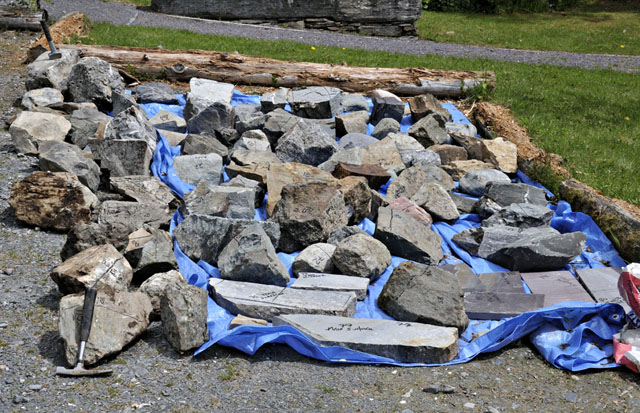
The boulders were carted off to the Cerrig Granite Company in Pwllheli, where well-equipped workshops prepare all sorts of ornamental stone for a wide variety of purposes. I spent several days there supervising sample selection and cutting:
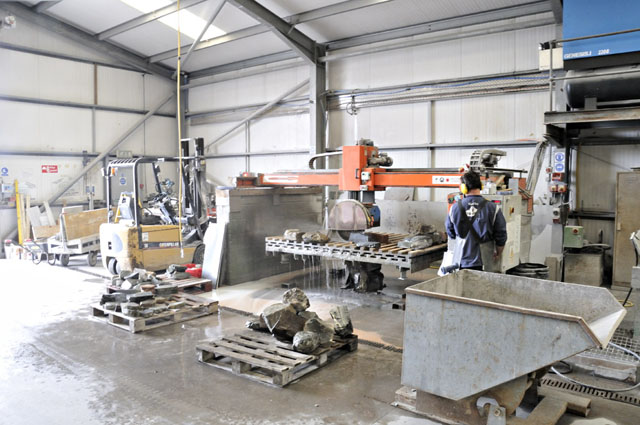
The diamond saws they use have lasers to mark-up the stone so that it may be cut into whatever number of equally-thick slices. Some great kit here!
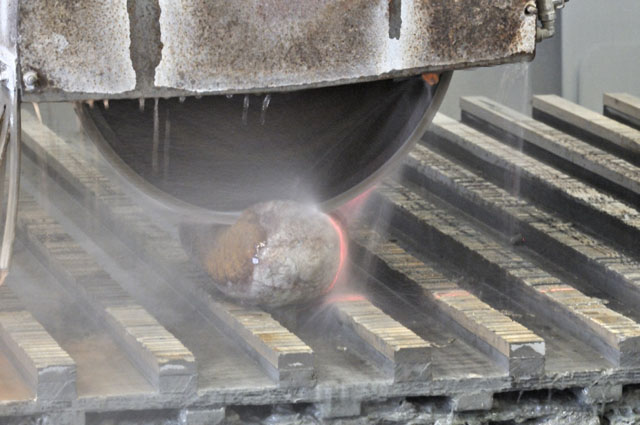
Cutting a slice from a boulder of flow-banded rhyolite from the Ordovician Lower Rhyolitic Tuff Formation. This stuff is seriously hard, being rich in silica, but the saw handled it no problem....
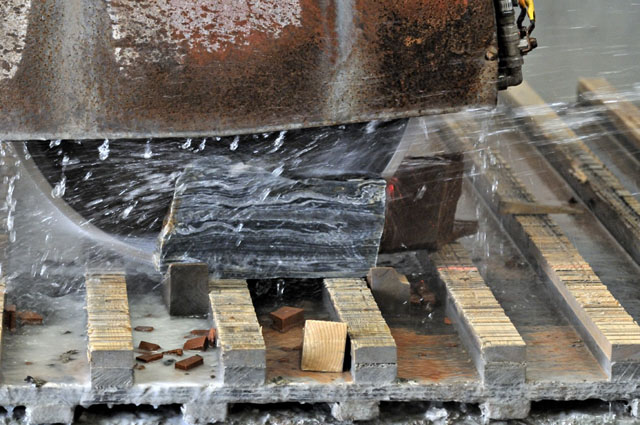
The newly-sawn rhyolite showing the banding which is common in this rock-type - when molten, rhyolite magma is very viscous, squidging like toothpaste, hence the contortions in the bands. Pretty stuff!
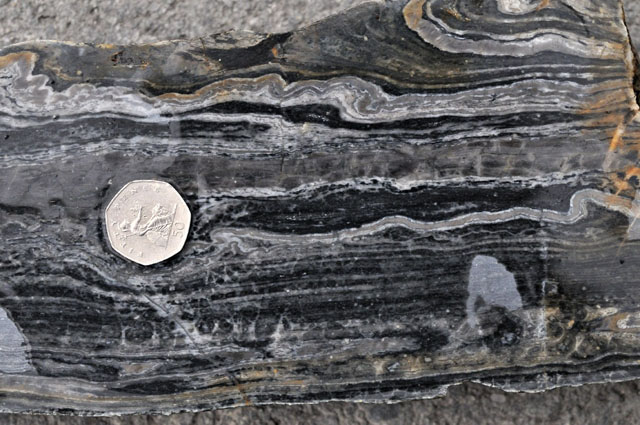
Sliced boulders stacked-up on pallets. It was essential to keep organised with every sample-number being marked on individual slices. Next, they were all polished on one side...

Next stage was to select slices and get them into running order - the specification was to trace Darwin's route, which is known in approximate terms. Although it would not be possible to represent every different rock he walked over (not enough space apart from anything else), I wanted the wall to be both representative and interesting. The slices would then be cut into squares and oblongs to span the 20cm wall-top inlay width specified by the designer. These finished items would then be mounted onto slabs of granite to make composite blocks. Here we realised just how difficult it would be to get enough material from the boulders collected: once there is the need to cut regular shapes from irregular slices the wastage really kicks in!
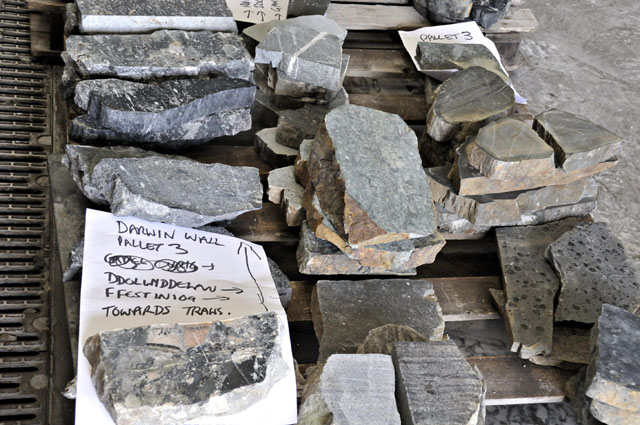
But we got there! Here, the composite blocks are laid out in three rows, in running order: L to R Ogwen, Ffestiniog and Ardudwy.
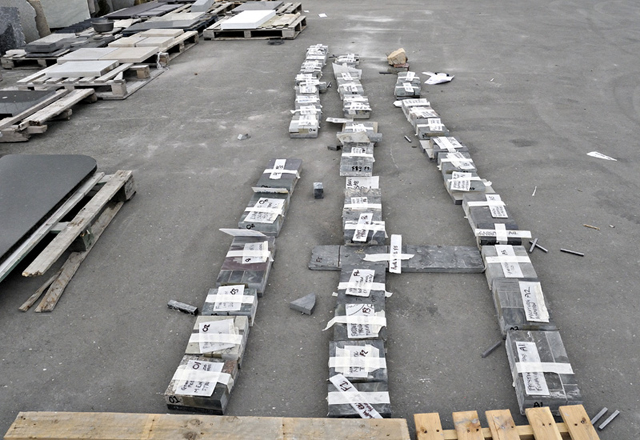
Each run was given a prefix and individual composite blocks were then numbered in running order - this is a composite block from the Moelwyn Volcanic Formation, from which I collected boulders up by the Stwlan Dam at Tanygrisiau on May 24th.....

From this:
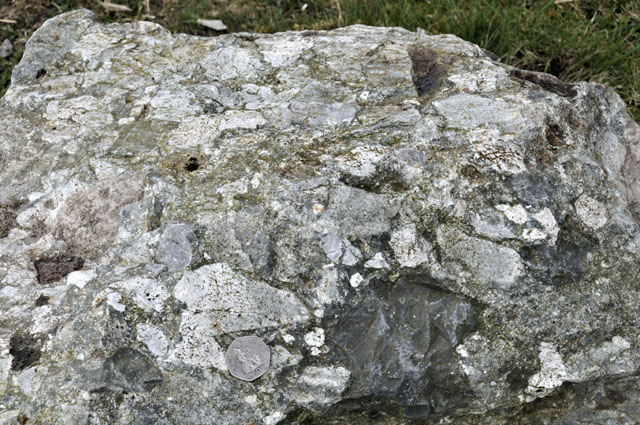
To this - the finished product in the Darwin Wall.
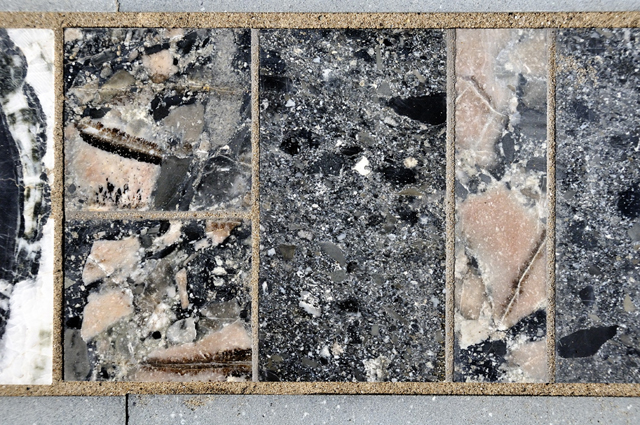
The new Ogwen Visitor Centre, including the Darwin Wall, was opened by the Welsh Assembly Government's Minister of Sport and Culture, John Griffiths, on 18th July. I arrived there early to get some photos. Here's the Bangor-Ogwen end - the start, with granite erratics from the Menai Strait, Arfonian volcanic and sedimentary rocks and the Llanberis Slates with their distinctive purple to green colouration:
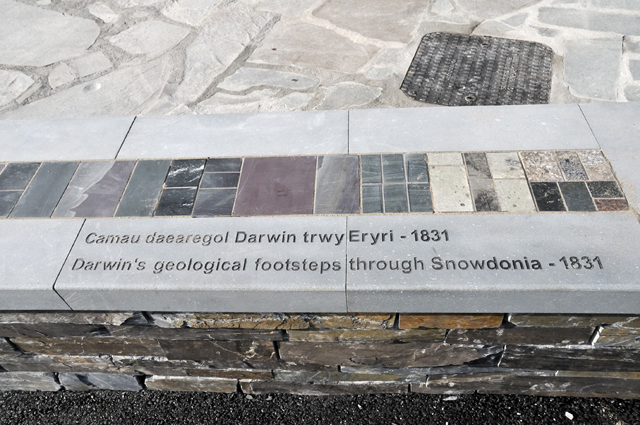
Looking out along the first section of the wall in the dazzling morning sunshine:

The other, Barmouth end also features glacial erratics, both from the Welsh ice and the Irish Sea ice. We left some of these in their natural shape: the final one is high-grade metamorphic schist, full of glittering mica, and surely from western Scotland or even further afield. Because we had to hurry for the official opening, the composite blocks were embedded in sand: they have since been grouted in. Joss Thomas of the Cerrig Granite Co (L) and Joe Jones of Maentwrog Masonry (R) examine their work - a superb job that brought three distinct skill-sets together in cooperation. It would have been impossible to do it any other way.
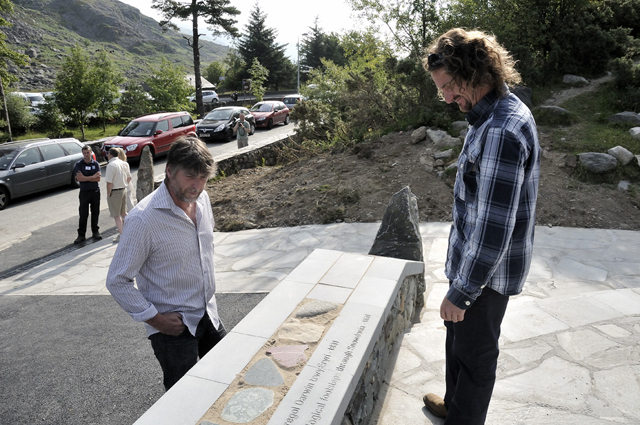
Stepping back a little, this is the Wall and, behind it, the new Visitor Center:
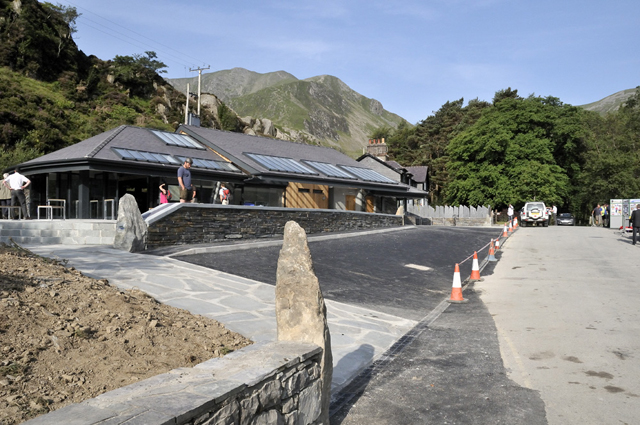
After the opening and briefly explaining the basis of the wall to the minister, I climbed about halfway up the steep hill to the north of the Ogwen Valley, Pen yr Ole Wen, in order to get some 'aerial' perspectives. Here's a telephoto looking down from the hillside:
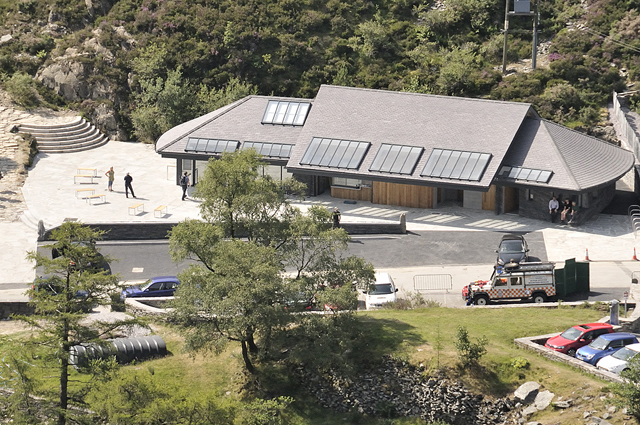
Here's a wide angle shot showing Cwm Idwal and the Glyders: I could have got more of Llyn Idwal had I climbed higher but in the searing heat this was far enough!

Some interesting research-related things were chosen to be in the Wall - these are specimens, collected from Craig Ganllwyd to the N of Dolgellau, of pebbly sandstone from the Lower Cambrian Rhinog Formation, with their distinctive red quartz pebbles:
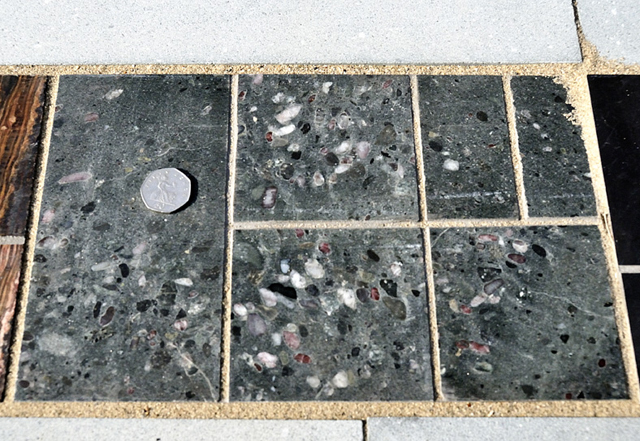
These are from the Bron-llwyd Grits Formation, which lies on top of the slates at Penrhyn Quarry near Bethesda. Its exact age is unknown, but it is probably Lower Cambrian again. Where's the red quartz? Different sediment source or some more complicated explanation?

Here's a slab of lower Ordovician slate from the Nant Ffrancon Formation, with several quartz-veins which demonstrably pre-date cleavage formation. The cleavage can be seen running broadly north-south in the image and careful scrutiny shows that it passes through the quartz too.
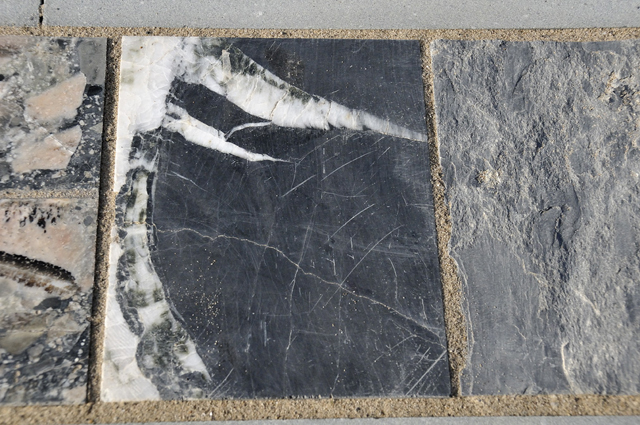
The Darwin Wall does a great job of showcasing the diverse rocks of Snowdonia and it was a great project to deliver with my colleagues. The help given to us by others, such as First Hydro, Forestry Commission Wales/CCW (now merged into Natural Resources Wales), the Welsh Slate Company and the National Trust, must also be acknowledged with gratitude - getting vehicle access into collecting areas was often impossible, but where it could be done it made the job a darned sight easier!
Fishing has been surprisingly quiet with everyone wondering where the mackerel have gone off the Llyn Peninsula. We camped up at Aberdaron one night then gave the rocks a good try the next day, but with very little to show for it. The dolphins put on a great display though:
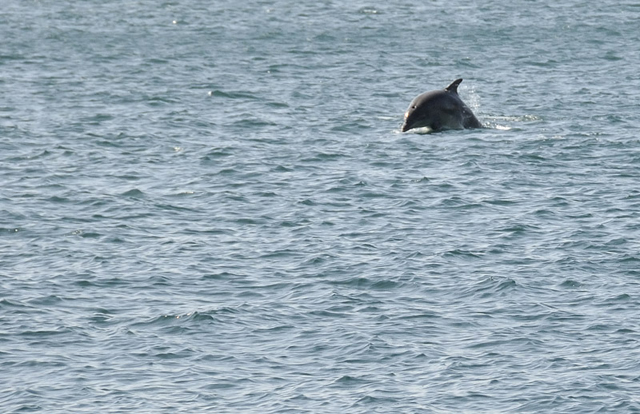
Feeling I needed more focal length to do these creatures justice, I started looking for a longer lens. Nikon prime lenses of this focal length are way, way beyond my budget, but after much reading and comparing, I decided the Sigma 150-500mm zoom would be worth a try and a few days later a used one turned up at a very good price. Having bought it, I would have to start getting the hang of it: an ideal testing-ground was the hide at the Montgomery Wildlife Trust's Cors Dyfi reserve, which is the home of the Dyfi Osprey Project. The osprey nest was too far away but the songbirds frequenting the bird feeders would make a good subject. The lens has an image-stabilisation gizmo which allows handheld shots in good light at full telephoto, Here are the first results - firstly a young redpoll:
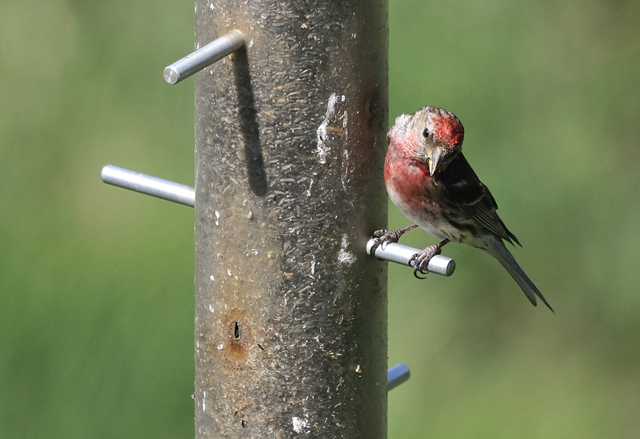
These are probably its parents....

A greenfinch:
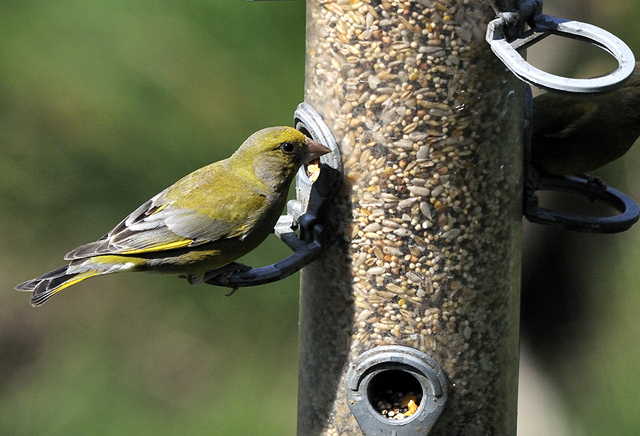
A siskin:
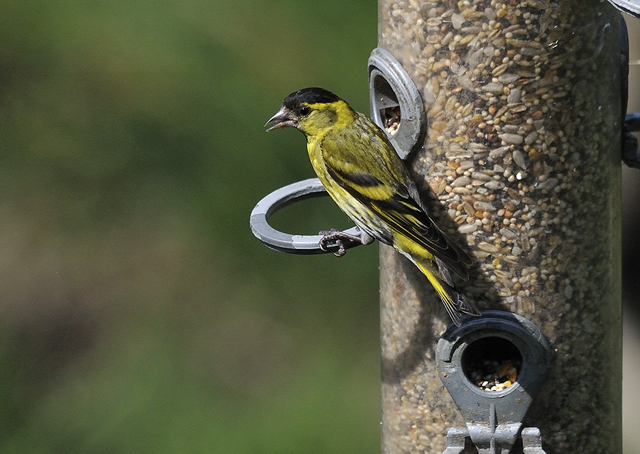
And another siskin, plus part of a hen chaffinch. I need more practice for sure, but I'm pleased with the sharpness I'm getting so far. These birds were constantly moving about - one cannot expect them to pose for photos! Taking a larger field of view then digitally cropping out unwanted half-tails etc got the above results.
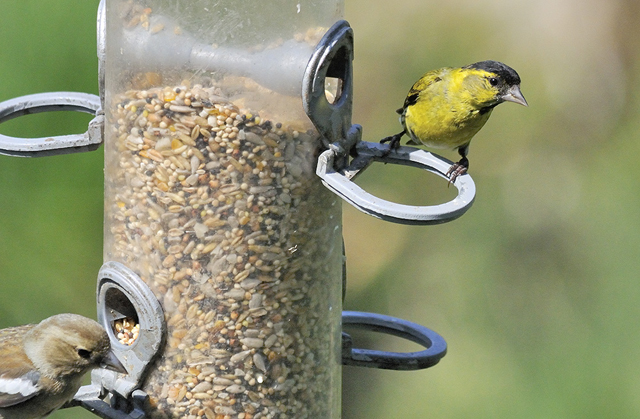
For the gardener, the big feature of July 2013 has been the lack of rainfall. My rainwater-storage system (150 gallons) is almost empty and I have had to haul water from the river since the end of last week. This is a job best done at first light before the traffic makes it a dangerous activity - it's lovely down there then (apart from the midges):
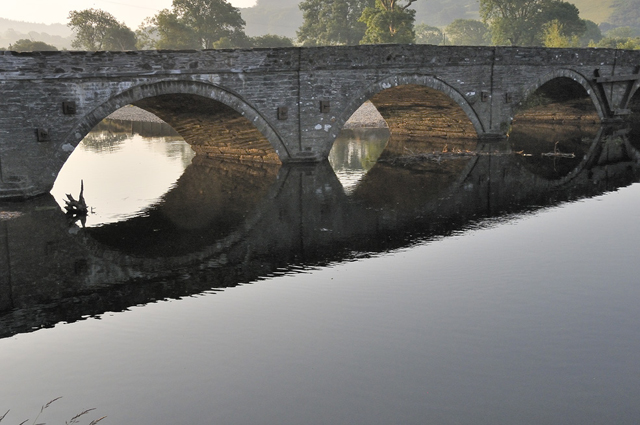
Watering the soil at the stem-bases of the individual plants has been the way to go - it conserves the water and weeds do not germinate in the baked surface-soil between them. These chard plants have been getting about two pints each every other day, similar to being hit by a good thunderstorm every couple of days, and they seem fairly happy with that arrangement.
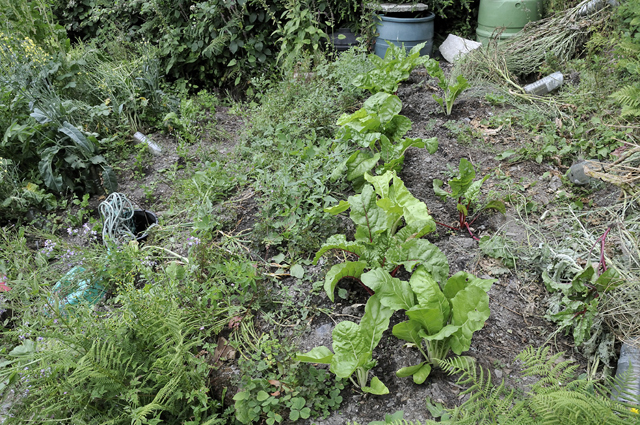
I also re-rigged the bird feeder: firstly secure attachments were made using old tope-traces (hawser-laid steel wire):
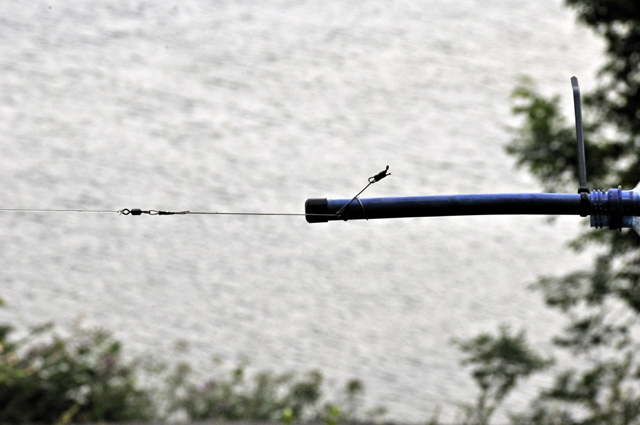
Then, a suitable length of 60lb high-vis shock-leader was tied and tensioned between them. The feeder slides on a Clements boom, but is stopped by a few turns of old telephone wire that can only be slid along under stiff finger and thumb-pressure:
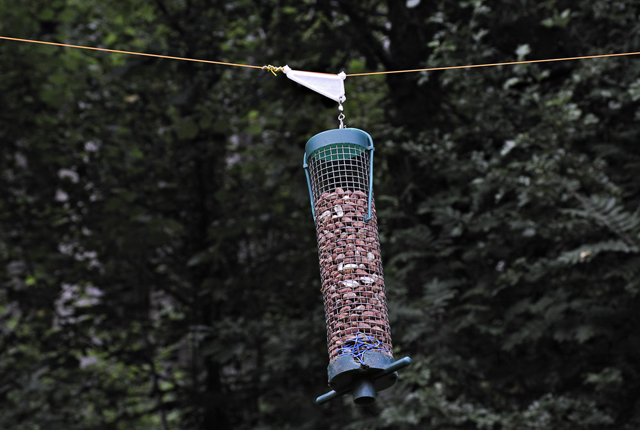
Will that stop the squirrels? So far, yes. We'll see come the winter!
All eyes are now on the coming week and the thunder potential, although I'm especially hopeful that we will get a decent fall or two of rain. I have things that urgently need planting out and some less settled conditions for a while would be seriously useful in that context. More soon...
BACK TO WEATHER-BLOG MENU
New! Fine Art Prints & digital images for sale-
Welsh Weather & Dyfi Valley landscapes Slide-Library - Click HERE